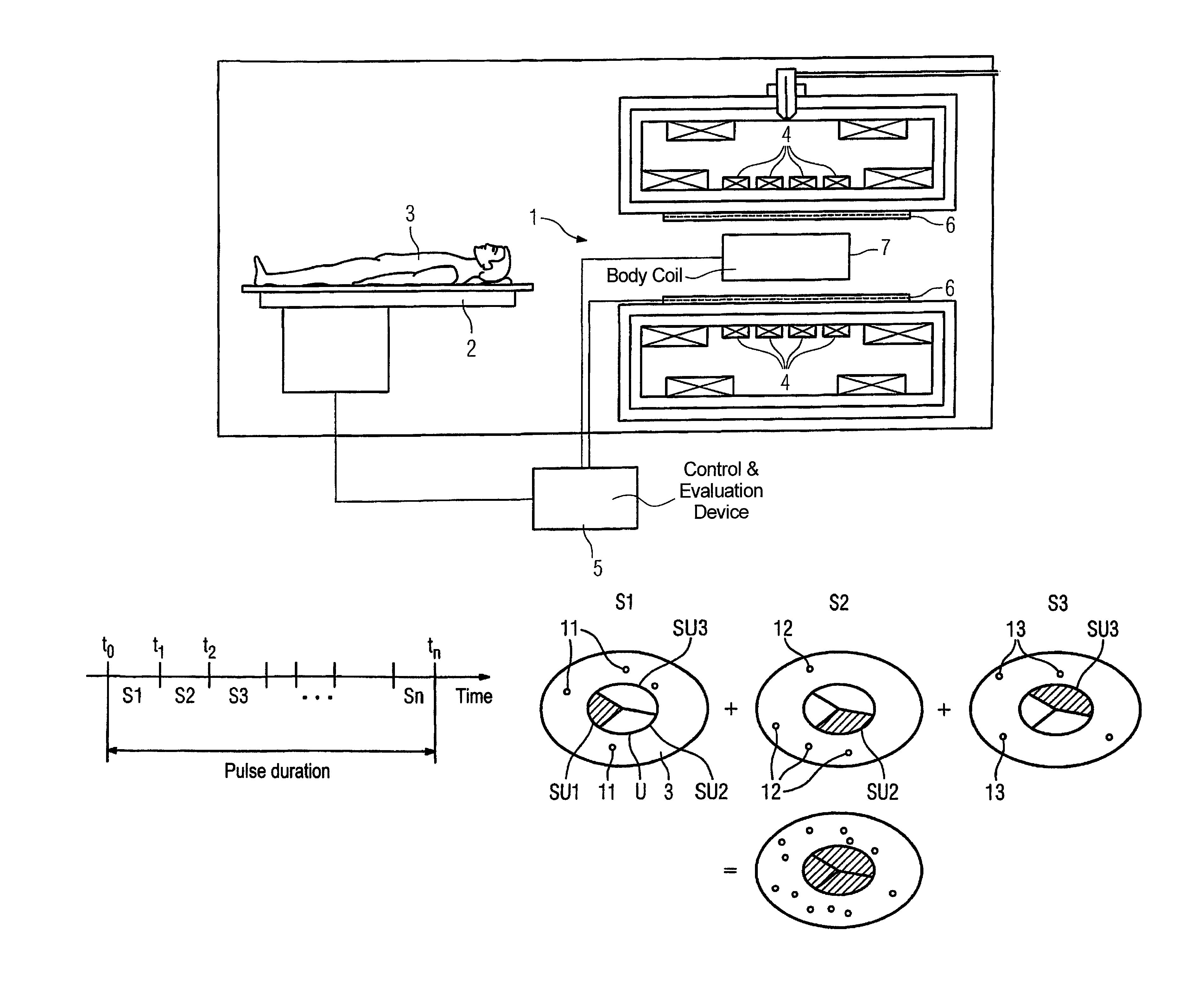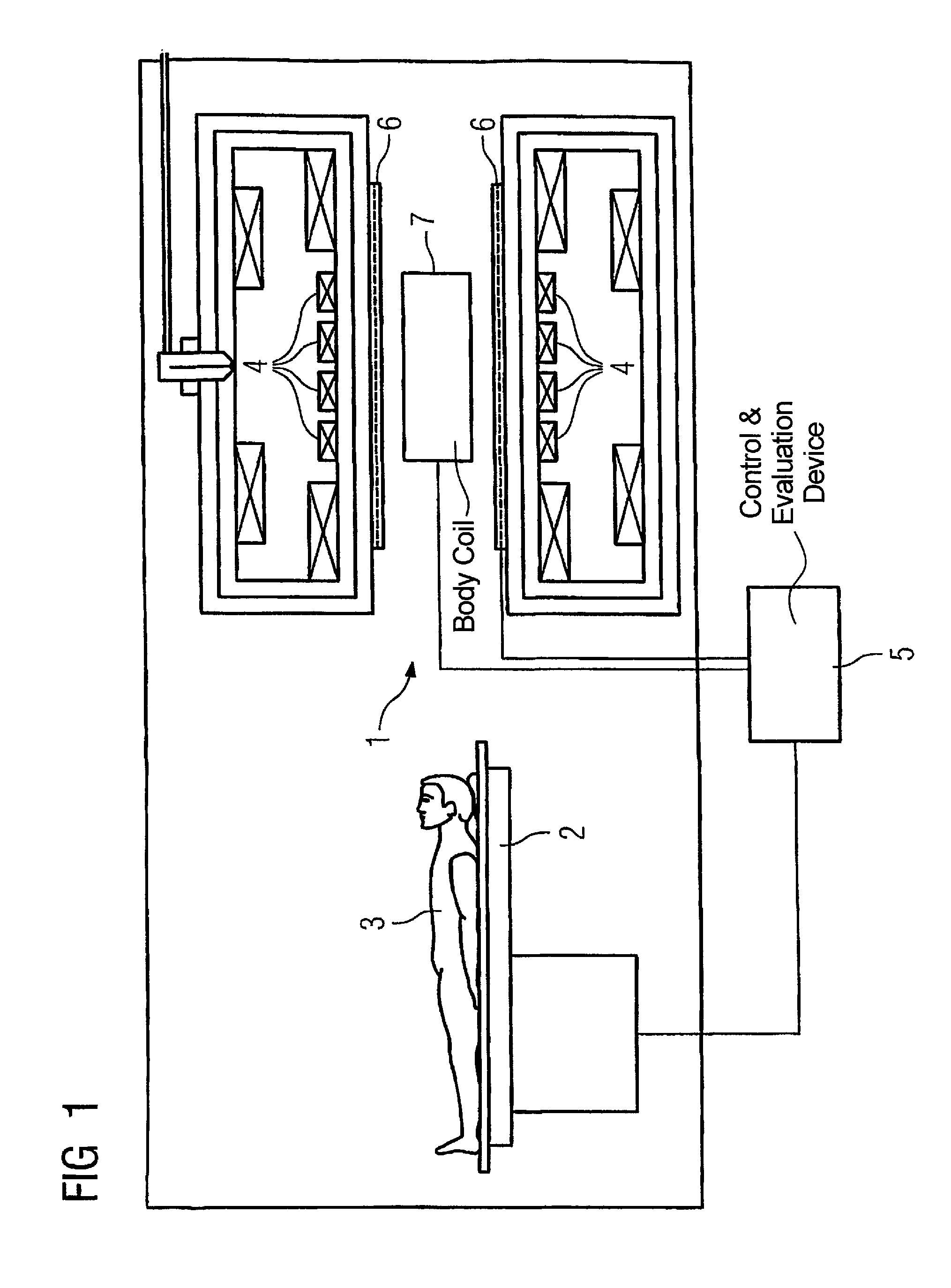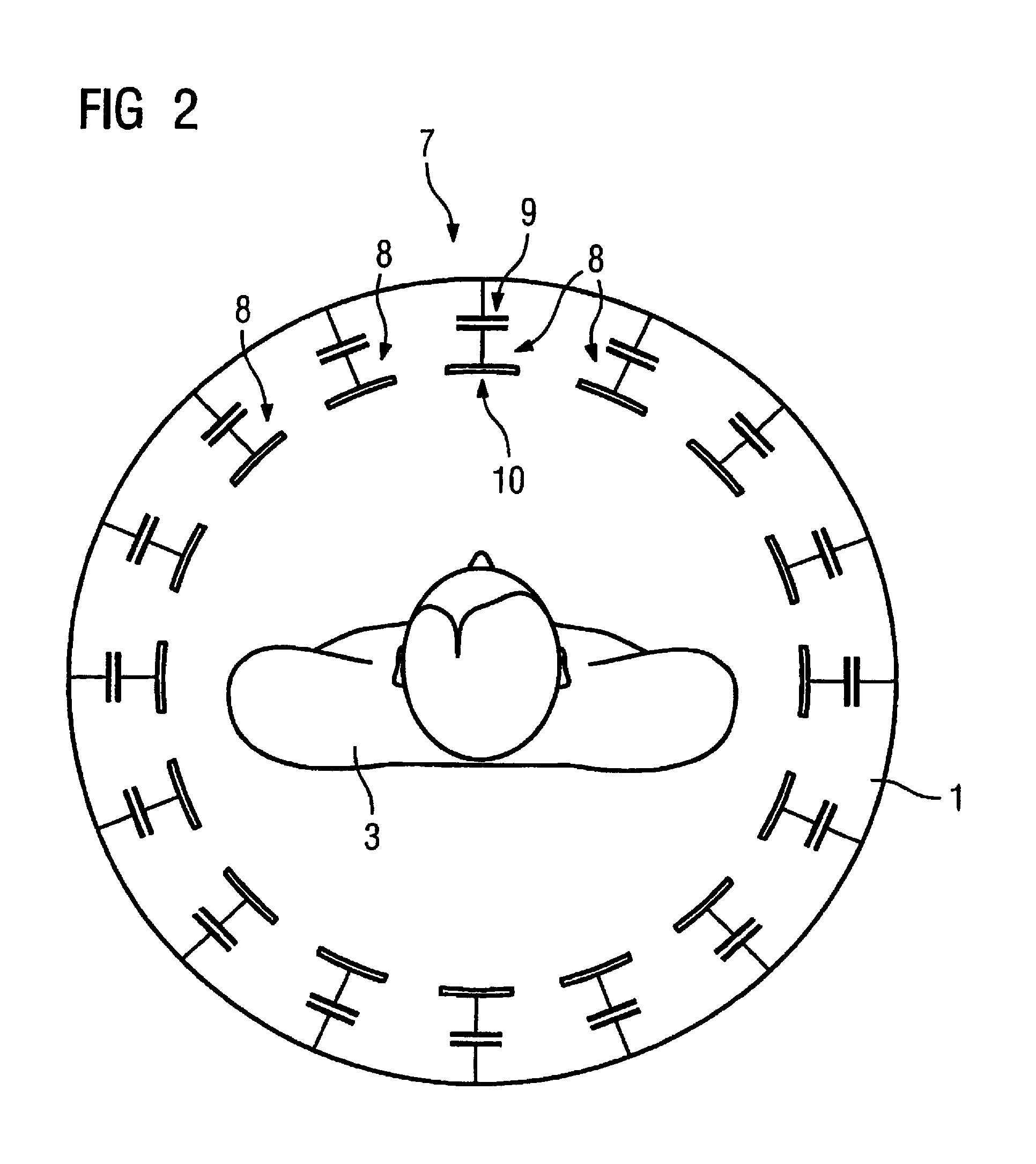Method for generating a homogeneous magnetization in a spatial examination volume of a magnetic resonance installation
a magnetic resonance installation and spatial examination technology, applied in the direction of instruments, diagnostic recording/measuring, reradiation, etc., can solve the problems of unallowable heating and low individual local energy application during the very short excitation duration, and achieve good homogeneous field distribution and reduce patient exposure
- Summary
- Abstract
- Description
- Claims
- Application Information
AI Technical Summary
Benefits of technology
Problems solved by technology
Method used
Image
Examples
Embodiment Construction
[0029]FIG. 1 shows an inventive magnetic resonance system that has an examination region 1. An examination subject 4 (here a person) can be introduced into the examination region 1 by means of a patient bed 2. The examination region 1 in which the examination volume is situated is charged with a basic magnetic field by means of a basic field magnet 4. The basic magnetic field is temporally constant (static) and spatially as homogeneous as possible. It exhibits a magnetic field strength that is advantageously 3 T or more.
[0030]The basic field magnet 4 is advantageously fashioned as a superconductor. Thus no further activations are required via a control and evaluation device 5 via which the system operation is controlled.
[0031]The magnetic resonance system also has a gradient system 6 by means of which the examination region 1 can be charged with gradient magnetic fields. The gradient system 6 can be activated by the control and evaluation device 5 such that gradient currents flow in...
PUM
 Login to View More
Login to View More Abstract
Description
Claims
Application Information
 Login to View More
Login to View More - R&D
- Intellectual Property
- Life Sciences
- Materials
- Tech Scout
- Unparalleled Data Quality
- Higher Quality Content
- 60% Fewer Hallucinations
Browse by: Latest US Patents, China's latest patents, Technical Efficacy Thesaurus, Application Domain, Technology Topic, Popular Technical Reports.
© 2025 PatSnap. All rights reserved.Legal|Privacy policy|Modern Slavery Act Transparency Statement|Sitemap|About US| Contact US: help@patsnap.com



